Are you interested in learning the electric guitar? Do you want to rock out with your friends, or maybe even make a career as a professional musician? Learning the electric guitar is an exciting journey that can take your musical aspirations to new heights. From picking up basic chords and strumming techniques to advanced solos, mastering the electric guitar is within reach! With some dedication and practice, it won’t be long before you’ll be able to jam like a pro. This post will guide you through the entire process of mastering the electric guitar, while providing helpful tips and tricks to make learning easier. Discover how to become a skilled musician in no time! So grab your guitar and get ready – let’s dive into how you can learn this iconic instrument!
What you Need to Play Electric Guitar
A Guitar
Of course, the main tool you need is an electric guitar. If you don’t already have one, there are lots of different models to choose from. Be sure to do your research and find a guitar that fits your needs and budget.
Amplifier
Although it’s possible to play an electric guitar without an amp, having one will greatly improve the sound quality of your music. Along with amplifiers come effects pedals and other hardware which can help you shape your sound even more. [1]
Pick
A pick (sometimes called a plectrum) is used for plucking the strings of your electric guitar. There are many materials, shapes, sizes and thicknesses available so be sure to experiment until you find one that fits your style of playing.
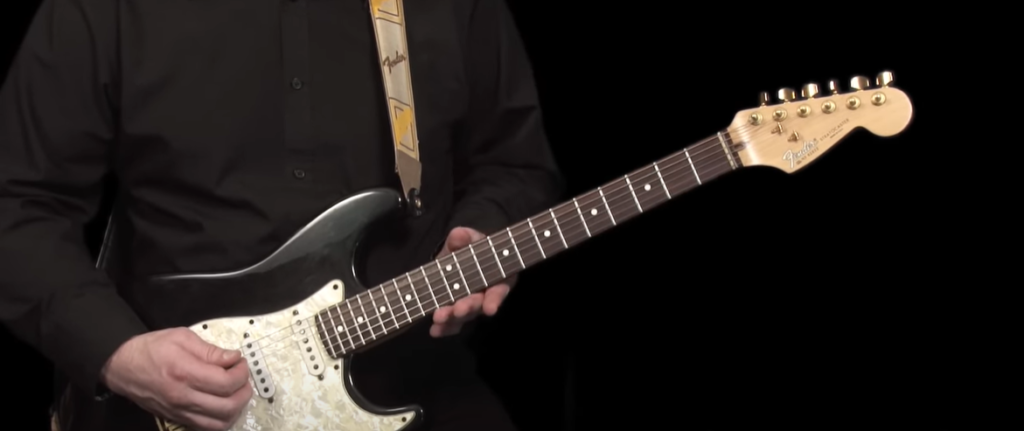
Cables
You’ll need cables to connect the guitar to the amplifier and any other equipment you have. Depending on what type of gear you’re using, make sure you get the right type of cable for the job.
Metronome
Using a metronome is essential when learning how to play electric guitar as it helps keep a steady tempo while practicing songs and riffs. Having a metronome ensures that your timing stays consistent which will help with accuracy and speed when playing.
Music Theory
Having knowledge of basic music theory can be instrumental in learning electric guitar. Understanding things like chords, scales and progressions allows a guitarist to understand the structure behind songs and gives them the tools to create their own music.
A Tuner
Having a tuner on hand will ensure that your guitar is in tune while you’re playing. While some amplifiers come with built-in tuners, an external one is also handy to have around for convenience. [2]
Strings
Electric guitars come with steel strings which can wear out over time. Make sure you have spare sets of strings handy so that you can change them when necessary. This will ensure your playing sounds in tune and crisp.
A Strap
If you plan on playing standing up, you’ll need a guitar strap. There are lots of different designs available so be sure to find one that fits your taste and is comfortable.
A Way to Learn
Since the electric guitar is such a vast instrument, it’s important to have some form of instruction. There are lots of online resources and lessons available as well as books and teachers in your local area who can help you get started.
Having the right tools and knowledge at hand will ensure that you have everything you need to learn the electric guitar quickly and easily.
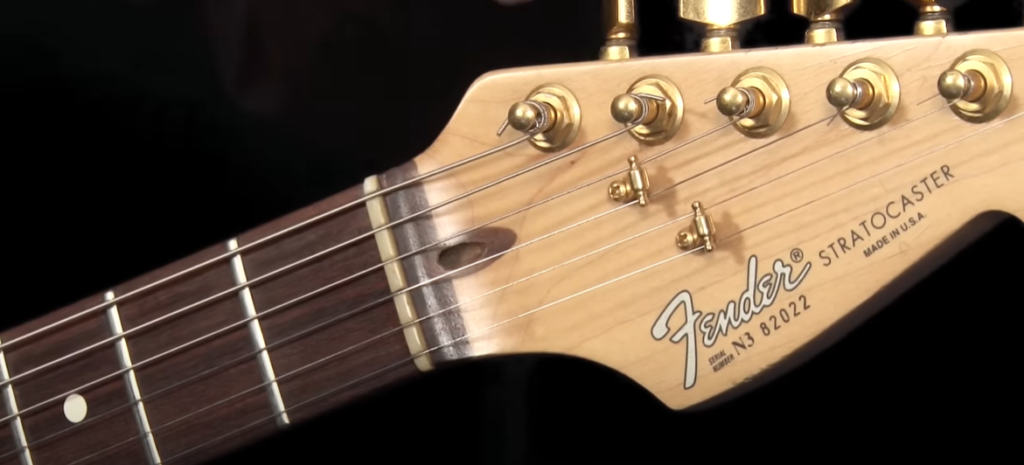
What isn’t Necessary But You Still Might Want
A Case or Gig Bag
If you’re carrying your guitar around to lessons or rehearsals, you might want to invest in a case or gig bag. Cases provide superior protection for your instrument and often come with straps, pockets and other features. Although they are more expensive than gig bags, if you care about your guitar’s safety it is worth the extra money.
Strap Locks
Most electric guitars come with a basic strap, but if you’re going to be playing standing up you might want to invest in some strap locks. They securely fix your guitar’s strap onto the instrument so you don’t have to worry about it slipping off during performances or practices. [4]
Amps Effects Pedals
Having an amp and effects pedals can give your sound more depth and color, however they are not essential for learning how to play the electric guitar.
A Capo
A capo, or capo tasto in full (Italian for ‘head of fret’), is a device used on the neck of your guitar to change the pitch of the strings. This can be useful when playing in different keys or when transposing songs. They are also often used to help play barre chords more easily.
Lessons
Although self-learning is an option, having a teacher can be essential when learning how to play the electric guitar. Having someone to guide and correct you as you practice will help you learn much faster and ensure that you are developing good technique.The most important thing about learning the electric guitar is commitment – if you commit yourself to practicing regularly, soon you’ll be playing your favorite songs!
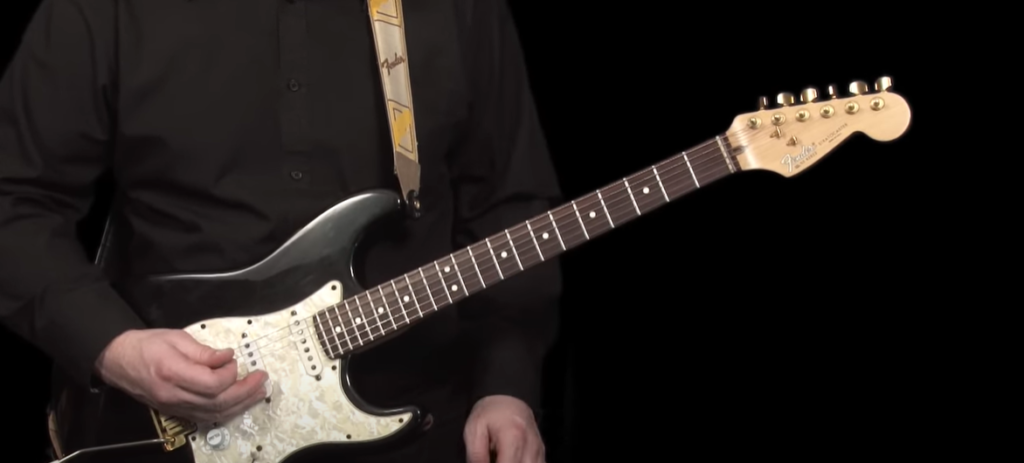
What You DON’T Need
Pedals
A lot of new guitarists think they need to buy a bunch of pedals to make their sound more interesting. That’s not the case. You can get great sounds out of simple setups and if you have a few basic effects, like distortion and reverb, that’s all you really need. [5]
An Amp Cover
Unless you’re needing to protect your amp from the elements, a cover is unnecessary. It won’t make your sound any better and will only take up valuable space in your practice area.
The Best Gear
You don’t need to buy the most expensive guitar, amp or pedals to get a good sound. Start with basics that fit your budget and use them until you can upgrade. Don’t waste money on gear you don’t need right away.
What Is The Difference Between Acoustic And Electric Guitar?
The main difference between an acoustic guitar and an electric guitar is the way they produce sound. An acoustic guitar produces sound acoustically, meaning that the vibrations of its strings are amplified when played through an acoustic amplifier or PA system. The sound produced by an electric guitar is created electronically, meaning that it has to be plugged into an external device such as an amp or audio interface before it can be heard.
Additionally, some styles of music are better suited to electric guitar over acoustic. For example, genres like metal and rock use heavily distorted sounds which are difficult to achieve on an acoustic guitar. Electric guitars can also provide more sustain than their acoustic counterparts, making them ideal for playing lead lines and solos.
Finally, electric guitars tend to be lighter in weight than acoustic guitars, making them easier to carry around with you when performing or practicing. All of these factors make electric guitars the go-to choice for many players looking to explore new musical avenues or just play more comfortably.
Whether you’re a beginner or experienced player, learning how to play the electric guitar can open up exciting new possibilities for your music-making endeavors! With the right instruction, practice, and dedication, you can become a master of the electric guitar in no time. [6]
How to Learn Electric Guitar?
Play the Guitar Consistently
One of the most important things to remember when learning how to play electric guitar is that practice makes perfect. It’s crucial to devote time and energy into getting comfortable with the instrument. Start by mastering basic chords and scales, then move onto more complex concepts like improvising and composing your own music.
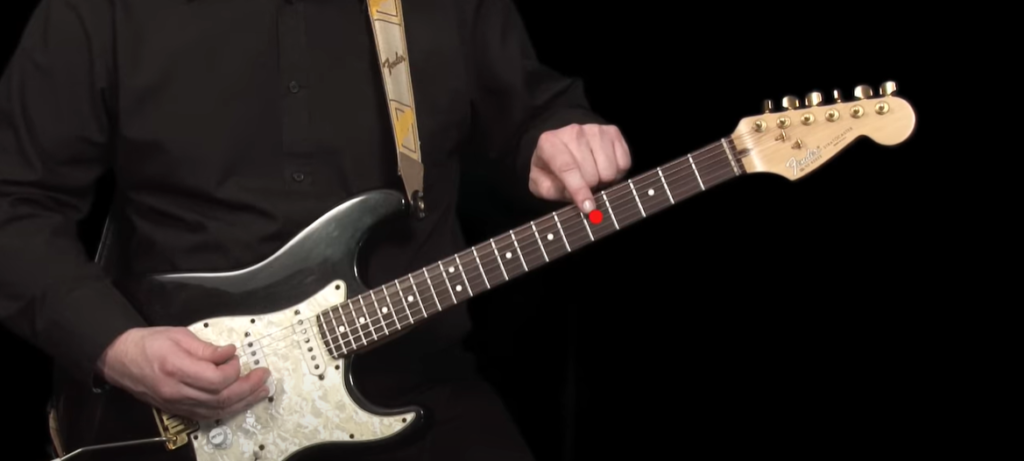
Listen to Other Players
Listening to other electric guitarists can help you develop a better sense of phrasing, tone, and technique. Spend some time listening to legendary players, as well as modern musicians who are pushing boundaries in their genres. Pay attention to the small details such as vibrato or string bending that give each artist their unique sound.
Find a Mentor or Take Lessons
Sometimes it’s beneficial to have a mentor or teacher who can provide personalized feedback and instruction. A qualified teacher can help you accelerate your development as an electric guitar player and give you insight into techniques that are appropriate for your level of playing.
Seek out Inspiration
As you progress, it’s important to stay motivated and inspired. Music is constantly evolving so seek out new genres, albums, and artists that challenge how you think about the instrument. In addition to listening to other players, take some time to explore different types of equipment such as effects pedals or alternate tunings. This will make each session more interesting and give you ideas for your own playing style.
Stay Positive!
Learning the electric guitar is challenging but extremely rewarding. It’s important to stay positive and keep pushing yourself to achieve your goals. With patience and dedication, you’ll be well on your way to becoming a great electric guitar player! [7]
Pay Attention to Smallest Details
Listening to the sound of your guitar, watching the way you hold it, and all the other small details matter. Paying attention can help you make incremental improvements over time and give you an edge over more casual players.
Record Yourself
Recording yourself regularly is a great way to track your progress and pinpoint areas that need improvement. Recording also gives you the opportunity to listen back and analyze your playing in great detail. This will help you identify any mistakes or weaknesses so that you can focus on improving them.

Use a Metronome or Drum Machine
Practicing with a metronome or drum machine is essential for developing your timing and rhythm. Start off slowly and gradually speed up as you become more comfortable with the tempo. This can help you stay in time with the music no matter how complex it gets.
Start with Learning Fun Stuff
Learning can be a lot of fun if you find the right material. Try learning some songs or pieces that you enjoy, as this will help keep your motivation level high. You’ll also get to experience the joy of playing music and mastering different techniques. Ultimately, learning how to play electric guitar is an exhilarating journey that takes time and dedication.
Learn Minor Pentatonic Scale
Minor pentatonic scale is one of the most popular scales used in rock and blues music. It contains all of the notes of a minor scale, but omits two degrees (the 2nd and 6th) which makes it easier to play. Start off by mastering this scale and it will open up a world of possibilities for your playing.
Practice Finger Speed Exercises
Increasing your finger speed is an important part of learning how to play electric guitar. Try practicing different exercises such as chromatic runs or arpeggios to help improve your dexterity and control over the instrument. This will make soloing much easier and more enjoyable! [8]
What Strings Do You Need?
The strings you need for an electric guitar will vary depending on the gauge and type of guitar. Generally speaking, a light gauge string is best for beginners as they are easier to press down. You can purchase individual strings or a set of strings from any music store. Some music stores may even provide advice on what type of strings you should use for your particular style of playing. If you know the types and brands of guitars used by some popular musicians, this might be a good guide for choosing the right strings for your own electric guitar.
With the right strings and an accurate tuning, you will be ready to start playing your electric guitar! Be sure to practice regularly and take breaks when needed to avoid straining yourself. As your skill grows, you may want to experiment with different string gauges and try out different styles of music. With enough practice and dedication, soon enough you will be able to master the electric guitar! [9]
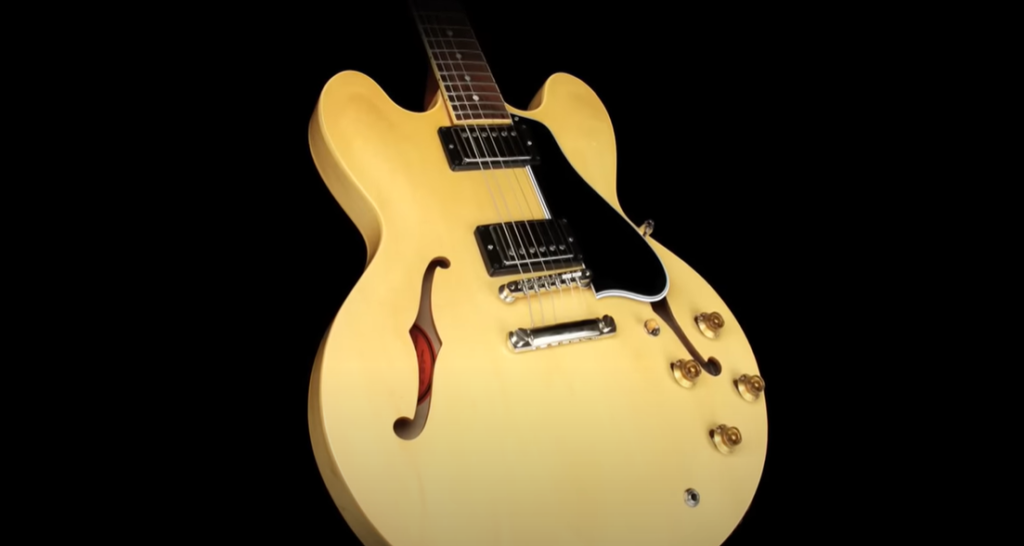
How Is A Guitar Tuned?
Guitar tuning is an important part of the process when learning how to play the electric guitar. Tuning your guitar properly ensures that you can produce a clear, consistent sound while playing. The typical way to tune an electric guitar is by using a chromatic tuner, which measures the sound waves produced by each string and alerts you if it’s out of tune. Alternatively, you can use an electronic or acoustic tuner connected directly to your amplifier.
Once your guitar is in tune, make sure to check it regularly as climate changes and string stretching can cause it to go out of tune easily. A good practice is to check the tuning before every session! Additionally, consider investing in specific strings designed for electric guitars-these are thicker and have a greater resistance to string stretching.
When you’re just starting out, it can be intimidating to learn how to tune your guitar properly. However, with patience and practice, tuning will become second nature! With the right tools and dedication, you’ll soon become an expert at learning the electric guitar.
What’s The Difference Between Barre Chords And Open Chords?
One of the first questions to ask yourself when learning the electric guitar is: what’s the difference between barre chords and open chords? Barre chords involve using one finger (the index finger) to press more than one string at a time. Open chords, on the other hand, are simpler; each string is fretted by a separate finger.
Barre chords tend to be tougher for beginners but provide an extra layer of complexity that can make your playing sound fuller and richer. To master them, you’ll need patience and practice in order to develop strength in your fretting hand (particularly your index finger). You should also focus on keeping your other fingers close together so they don’t accidentally mute adjacent strings. Once you’ve become comfortable with the technique, you’ll find that it opens up a whole new range of possibilities for your playing!
On the other hand, open chords are simpler and easier to learn. They don’t require as much strength from your fretting hand, but they still sound great. As long as you keep your fingers close together and hold them down firmly, these chords will sound clean and clear. And since each string is fretted by a separate finger, you have more control over which notes in the chord ring out clearly.
No matter which type of chord you decide to start learning first – barre or open – working on both types will improve your overall guitar skills. Both are essential for building a solid foundation when learning the electric guitar. With patience and practice, you’ll soon be able to master both styles with ease!
Are Your Fingers Supposed To Hurt?
When it comes to learning the electric guitar, no one likes to hear about sore fingers. Unfortunately, some finger pain is likely when starting out on your musical journey. It’s important to be aware of this from the start and know that it will eventually pass as you get more comfortable playing.
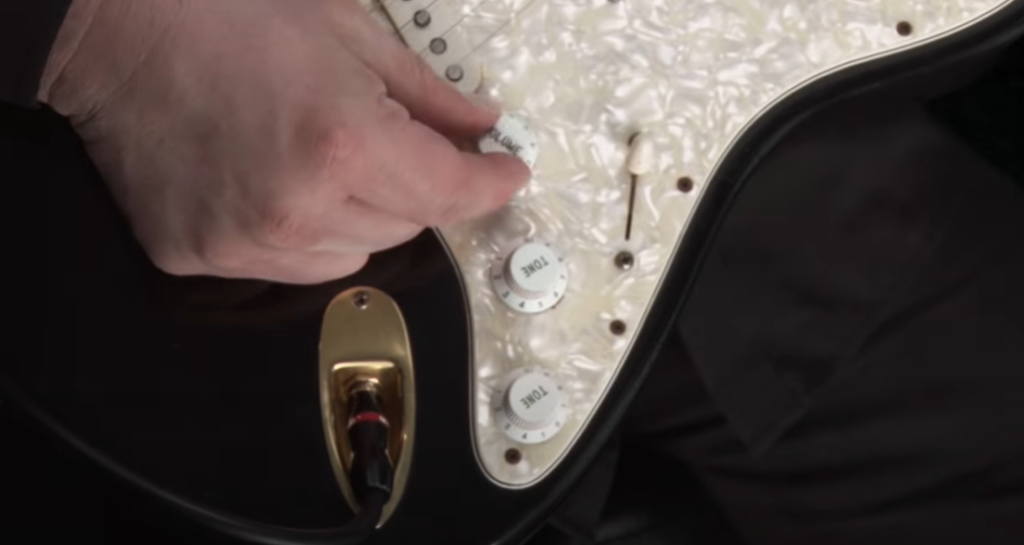
The most common cause of sore fingers is simply due to holding down strings with too much pressure and tension in your hand or wrist. The best way to avoid this is by loosening up and relaxing the muscles in your hand and arm. Taking breaks often can also help you maintain a lighter touch while playing so that your hands don’t become overworked.
Developing calluses on your fingertips can also reduce the amount of discomfort you feel while playing. Calluses are areas of toughened skin that form over time and help protect your fingertips from the constant pressure of pressing down strings.
Finally, make sure to adjust your guitar’s action, or distance between the strings and frets, so that it is not too low or high. Having an instrument with proper string height can reduce difficulty in fretting notes and also prevent excess fatigue on your hands.
How Do You Get The Most Out Of Your Practice Time?
Practicing the electric guitar is a must if you want to become a skilled player. You might think that spending more time on your instrument and playing songs over and over will make the difference, but there’s an even better way to get the most out of your practice time: focus.
Rather than trying to cover as much material as possible in one session, it’s best to pick a few specific areas or techniques and really zero-in on them until you can confidently play them. This could mean working on scales up and down the fretboard, perfecting your ability to switch between chords quickly, or familiarizing yourself with different strumming patterns.
Keep in mind that it’s important to challenge yourself as well— step out of your comfort zone, try something new, and be patient with yourself if things don’t go as planned. With enough practice and dedication, you’ll be shredding like a pro in no time! [10]
What’s The Most Common Beginner’s Pitfall?
One of the most common pitfalls when learning to play electric guitar is trying to learn too many things at once. It’s important to focus on basic skills such as chords, scales, and strumming patterns before moving onto more complex techniques such as shredding or speed picking.
Focusing on one topic for a period of time will help build your comfort level with the instrument and prevent you from getting overwhelmed. Additionally, focusing on only one skill at a time allows you to perfect it more thoroughly, which will result in faster progress overall. Once you feel confident with the basics, then you can move onto more advanced topics and continue improving your technical ability.
Another beginner’s pitfall is neglecting practice altogether. Learning to play guitar, like any other skill, requires practice and dedication. Without regularly scheduled practice, you’ll never reach your full potential as a guitarist. Set aside time each day to practice and stay motivated by setting achievable goals for yourself. With consistent effort and dedication, you’ll be able to make progress in no time!
Finally, don’t be afraid to ask questions or seek help if needed. There are plenty of online resources available to help you with your guitar journey such as lessons, forums and tutorials. Don’t hesitate to reach out whenever you need assistance or feel lost while learning your instrument; there is always somebody who can provide guidance and support!
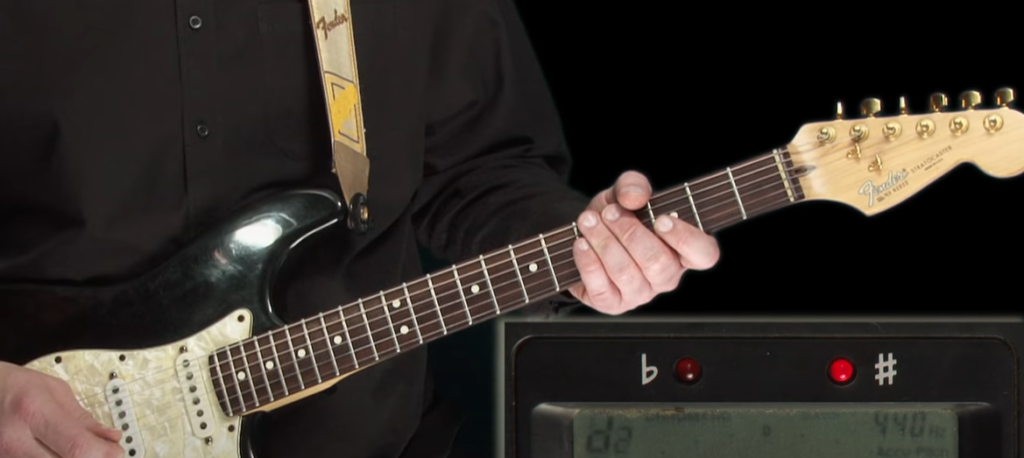
Learning the electric guitar isn’t an easy journey, but with the right attitude and techniques you can progress quickly. Focus on mastering basic skills and practice regularly to build your confidence with the instrument. Don’t be afraid to ask for help when needed and before long you’ll be playing like a pro!
Can Guitar Play Without Tuning?
The short answer to this question is no. Tuning a guitar is an essential part of the instrument’s maintenance and should be done regularly. If the strings are not correctly tuned, notes will sound out-of-tune or ‘off’ when playing chords and melodies. This can make it difficult to learn proper technique and even harder to play along with other instruments. Additionally, some guitars will require you to tune more often than others depending on the type of bridge system and string gauge used.
While some electric guitars come equipped with built-in tuners, these are typically not very accurate and can’t always provide an exact tuning reference for your guitar. Therefore, it’s recommended that all guitarists use either a digital tuner, pitch pipes or an electronic tuning fork to accurately tune their instrument. In addition to ensuring your guitar is properly tuned before playing, it’s also important to check the tuning regularly during practice sessions as strings can slip out of tune due to changes in temperature and humidity.
Taking the time to learn how to correctly tune a guitar is an essential part of learning how to play the electric guitar. Not only will you get more accurate notes when playing chords and melodies but it can also help you improve your overall technique by making sure all strings are at the correct tension and intonation. By taking care of your instrument and keeping it properly tuned, you’ll be able to set yourself up for success from day one!
Are Guitar Apps Worth It?
Guitar apps are becoming increasingly popular for learning the electric guitar. There is a wide variety of options available in app stores and online, and many of them come with video tutorials, interactive lessons and simulated sounds or effects. However, it can be difficult to tell which ones are worth investing time and money in.
The most important thing to consider when choosing a guitar app is how easy it is to use and navigate. The best apps will have an intuitive interface that doesn’t require too much effort or frustration on the part of the user. Look for detailed instructions and helpful tips within the app itself, as this will make it easier to learn at your own pace. Additionally, check out reviews from other users before making any purchases.
Another key factor to consider is the type of content available in the app. Basic apps may provide basic tutorials and lessons, while more advanced versions will offer simulated sounds as well as video and audio tracks for learning specific techniques or playing styles. If you’re looking for a comprehensive guide to learning the electric guitar with an interactive experience, look for an app that comes bundled with supportive features like video clips and sound samples.
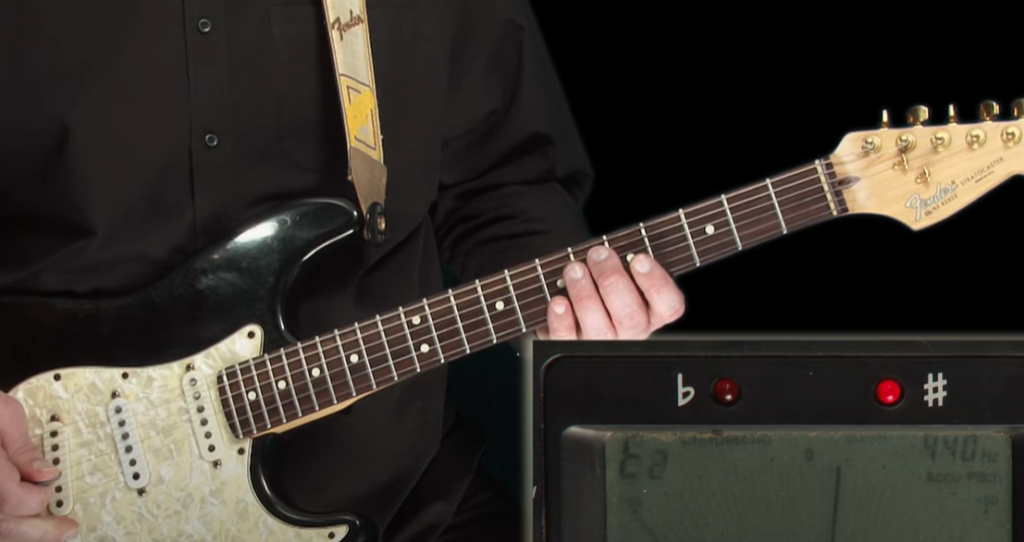
Lastly, consider how much time and money you’re willing to invest in an app. Some apps are free or have lower fees than others, so it’s important to shop around before making a final decision. While some apps may require payment upfront, there are also options that offer subscription services which can make it easier to stay on track with learning the electric guitar.
Overall, guitar apps can be a great way to learn the electric guitar if you choose one that is easy to use and has content tailored to your needs. However, they should not replace professional instruction or practice sessions – no matter how well designed an app may be, there’s still no substitute for spending time honing your craft in real life.
By taking these criteria into consideration, you’ll be sure to find an app that fits your budget and helps you get the most out of learning the electric guitar.
What Age Is Best to Learn Guitar?
The age at which you start learning guitar depends on your individual circumstances and interests. Generally, the sooner you can start exploring the instrument, the better. For some people, this might be as young as 6 or 7 years old; for others, it could be in their teens or even later in life.
Before enrolling a young student into formal lessons, it’s important to assess whether they have a genuine interest in playing guitar. A good way to do this is by introducing them to different types of guitars (such as electric and acoustic), letting them watch tutorials online, or allowing them to listen to professional recordings of great guitarists from throughout history.
At any age, patience and practice are essential ingredients when learning guitar. For younger students, it’s important to have realistic expectations and set achievable goals that recognize their individual learning styles and pace.
Guitar lessons for adults are often more focused on helping the student understand the fundamentals of playing and finding a style that suits them best. It’s also a great way to explore music theory or experiment with different genres like jazz, rock, classical, etc.
No matter what age you are when you start learning guitar, it is an incredibly rewarding experience. With consistent practice and dedication to mastering your skills, you can make amazing progress over time – eventually becoming an accomplished musician! So don’t be intimidated by starting late – there’s no better time than now to begin your journey. [11]
Is It Okay to Play Guitar Everyday?
Yes! Playing guitar every day is a great way to improve your skills and progress as a musician. If you are serious about learning the electric guitar, you should set aside at least 30 minutes of practice each day. Even if it’s just playing something simple, like a few chords or scales, this practice will help build your finger dexterity and muscle memory. Practicing regularly also makes it easier to learn new techniques and songs quickly. With dedication and consistent practice, you’ll be playing like a pro in no time!
Of course, don’t forget to give yourself breaks when needed; too much practice can lead to over-exhaustion and frustration. Take time for yourself away from the instrument and listen to music for enjoyment – you’ll come back to practice feeling fresh and motivated!
The most important thing is to keep practicing and have fun with it. With enough dedication, you will begin to see the results of your hard work and be proud of your progress.
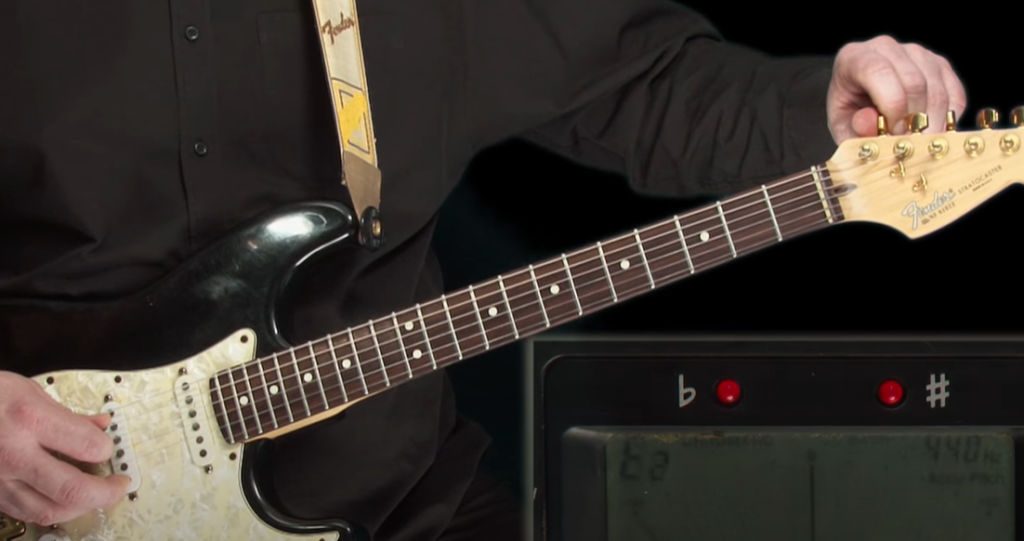
Mastering the Electric Guitar: Learning Resources and Practice Tips
Learning the electric guitar is an exciting journey. This comprehensive table provides you with essential information, learning resources, and practice tips to help you become proficient in playing the electric guitar.
| Step | Key Information | Learning Resources | Practice Tips |
|---|---|---|---|
| 1. Get the Right Guitar | Choose an electric guitar that suits your musical preferences and style. |
|
|
| 2. Learn Basic Chords and Scales | Master fundamental chords (like C, G, D) and scales (pentatonic, major, minor). |
|
|
| 3. Explore Music Theory | Understand the basics of music theory, including notes, scales, and keys. |
|
|
| 4. Learn Songs You Love | Choose songs you’re passionate about to keep your motivation high. |
|
|
| 5. Join a Music Community | Connect with other musicians, both online and in local music scenes. |
|
|
Explanation of the Table:
- Step: Lists the key steps in learning the electric guitar.
- Key Information: Provides essential information related to each step.
- Learning Resources: Suggests resources where you can find information and guidance for each step.
- Practice Tips: Offers practical tips for effective practice during your learning journey.
Embark on your electric guitar learning journey with confidence by following these steps, utilizing the suggested resources, and implementing practice tips. Whether you’re a beginner or looking to refine your skills, this guide will help you become a proficient electric guitarist.
FAQ
Can you teach yourself electric guitar?
Yes, it is possible to teach yourself electric guitar. With dedication and practice, anyone can learn the basics of electric guitar playing in a relatively short amount of time. There are plenty of online resources available, such as video tutorials, articles on technique and theory, instructional books, and much more that can help you get started. Additionally, spending time with experienced players or taking lessons from professional instructors can also be beneficial for learning how to correctly play the instrument.
What is the best way to learn electric guitar?
The best way to learn electric guitar will vary depending on each individual’s needs, goals and musical preferences. However, some common suggestions include: spending time with experienced players; taking private lessons; practicing every day; learning melodies and solos by ear; using online resources such as video tutorials, articles on technique and theory, and instructional books; listening to recordings of your favorite guitarists; transcribing music from recordings; attending workshops or masterclasses with professional instructors; and playing along with backing tracks.
What are the basics of electric guitar?
The basics of electric guitar include how to hold the instrument properly, basic chords and scales, strumming techniques, fingerpicking patterns, muting techniques, harmonics, vibrato techniques, hammer-ons and pull-offs. Additionally, understanding music theory such as chord structure and progressions is essential for developing a strong understanding of the instrument. Lastly, it’s important to develop good practice habits in order to ensure consistent progress.
What is the best way to practice electric guitar?
The best way to practice electric guitar depends on each individual’s needs and goals, but some common suggestions include: starting with a few simple songs; learning melodies and solos by ear; using online resources such as video tutorials, articles on technique and theory, and instructional books; listening to recordings of your favorite guitarists; transcribing music from recordings; attending workshops or masterclasses with professional instructors; playing along with backing tracks; taking private lessons; spending time with experienced players; and making sure you have good posture while playing. Additionally, it’s important to set aside regular practice times every day in order to develop good habits.
Are there any tips for getting better at electric guitar?
Yes, there are a few tips that can help you improve your electric guitar playing. First, make sure you have good posture and technique while playing. Second, practice regularly and consistently in order to develop muscle memory and better reflexes when it comes to fretting notes and navigating chord shapes. Third, listen to recordings of your favorite guitarists so you can learn from their playing style. Fourth, transcribe pieces of music from recordings in order to expand your understanding of the instrument. Finally, take lessons from an experienced instructor or spend time with experienced players in order to get personalized feedback on your progress.
Can I learn electric guitar in 1 year?
Yes, it is possible to learn the electric guitar in one year. With dedication and practice, you can acquire the skills needed to play the instrument with a high degree of proficiency. Before starting, however, it’s important to set realistic goals for yourself and make sure that you’re taking lessons from an experienced teacher who can provide knowledgeable instruction. It also helps if you have access to quality resources such as online tutorials and instructional books. To develop your technique, concentrate on refining your physical abilities—such as posture and finger positioning—as well as learning the basics of music theory. Additionally, become familiar with different genres of music so that you have a broader range of understanding when playing electric guitar. Ultimately, regular practice will be essential in helping you reach your goal within the designated time frame. With consistent effort and dedication, achieving success on the electric guitar in one year is certainly attainable!
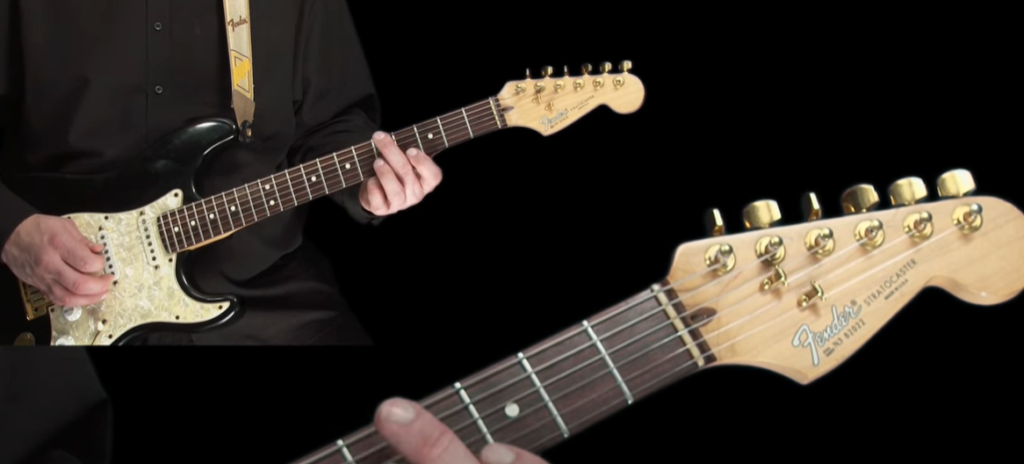
Is playing the electric guitar hard?
That depends on your individual skill level. For some, learning the electric guitar may seem daunting at first, as it requires a certain amount of physical and mental dexterity. However, with patience and an understanding of basic music theory, anyone can learn to play the instrument with relative ease. It’s also important to remember that the key to success is practice—you won’t be able to master the guitar overnight! By committing yourself to regular practice sessions and taking advantage of instructional resources such as online tutorials or private lessons, you will be well on your way to becoming an accomplished electric guitarist in no time!
Is it too late to learn electric guitar at 20?
Not at all! It’s never too late to learn a new skill. As long as you have the dedication and commitment, there is no reason why you can’t become proficient with the electric guitar at any age. To make the process easier, it may be beneficial to take lessons from an experienced instructor who can provide knowledgeable instruction tailored specifically for your individual needs. Additionally, make sure to set realistic goals for yourself and practice regularly so that you can track your progress over time. With hard work and determination, it won’t be long before you reach your musical ambitions!
What percentage of people quit guitar?
Statistics show that over 80% of people who start learning the electric guitar will eventually quit. It is important to understand why this happens, as it can help you make sure that you do not fall into the same trap. One of the most common reasons people give up on learning electric guitar is due to lack of motivation. Learning an instrument such as a guitar requires time, effort and dedication. Without regular practice and focusing on improvement, progress will be slow or non-existent.
Another reason for quitting may be from frustration or boredom with the material being learned. If there is not enough variety in what is being practiced or if it becomes too difficult too soon, students may lose interest before they have had a chance to really get into the instrument and make progress. It is important to find a balance between pushing yourself to learn and taking your time to enjoy the process. This will help you stay motivated, progressing in skill and having fun at the same time.
How can I find a suitable electric guitar teacher or instructor?
Finding a good electric guitar teacher involves researching local music schools, teachers, or online platforms. Look for experienced instructors with positive reviews or recommendations from other guitarists. Ensure their teaching style matches your learning preferences.
What is the role of music theory in learning the electric guitar?
Music theory is essential for understanding the language of music. Learning theory can help you grasp chord progressions, scales, and song structure. It’s valuable for both composition and improvisation on the electric guitar.
What are the best practice routines for improving electric guitar skills?
Effective practice routines should include warm-up exercises, scales, chord progressions, and playing along with songs. Divide your practice time into focused segments, work on specific techniques, and gradually increase the complexity of your practice as you progress.
How can I use online resources and tutorials to learn electric guitar effectively?
Utilizing online resources like video tutorials, guitar learning websites, and apps can be highly effective. Choose reputable platforms like JustinGuitar, GuitarTricks, or Yousician. Follow structured lessons and use supplementary materials to enhance your learning experience.
What are some common challenges faced by electric guitar learners, and how can they be overcome?
Common challenges include finger strength, barre chords, and maintaining motivation. These can be overcome through regular, focused practice, using finger exercises, and setting clear goals. Additionally, playing with others can help maintain motivation and improve your skills.
How important is it to learn different guitar techniques and styles while learning the electric guitar?
Learning various techniques and styles is crucial for becoming a well-rounded guitarist. Explore techniques like fingerpicking, bending, and tapping. Experiment with different genres like rock, blues, jazz, and metal to expand your musical horizons.
What is the significance of recording and reviewing your electric guitar playing?
Recording your playing allows you to listen back and identify areas for improvement. It’s a great way to track your progress, refine your technique, and make necessary adjustments to your playing. It also helps you create a portfolio of your work and share it with others.
How can I effectively set and track my electric guitar learning goals?
Setting clear, achievable goals is vital for progression. Define specific objectives, whether it’s mastering a particular song, technique, or reaching a specific skill level. Regularly assess your progress and adjust your goals as you meet them, ensuring a sense of accomplishment and continued motivation.
Useful Video: Beginner Electric Lesson 1 – Your Very First Electric Guitar Lesson
Conclusion
Learning the electric guitar requires dedication and practice. It can be easy to get discouraged if you don’t see quick results, but with time and effort, anyone can learn how to play an electric guitar. Remember that each person’s journey is different and that everyone learns at a different pace. Take your time and find the right resources for you. With patience, you will become successful in learning this instrument. Good luck!
References:
- https://www.theguitarhead.com/blogs/guitar-tips/how-to-learn-electric-guitar
- https://www.wikihow.com/Learn-to-Play-Electric-Guitar
- https://nationalguitaracademy.com/learn-electric-guitar/
- https://play-guitars.com/electric-guitar-for-beginners/
- https://www.fender.com/articles/techniques/best-way-to-learn-guitar
- https://instrumentguys.com/how-to-learn-electric-guitar
- https://integraudio.com/if-learn-acoustic-electric-guitar/
- https://www.guitarinsideout.com/everything-you-need-to-play-electric-guitar/
- https://guitarspace.org/how-to-learn-guitar/
- https://www.schoolofrock.com/resources/guitar/what-is-the-best-age-to-learn-to-play-guitar





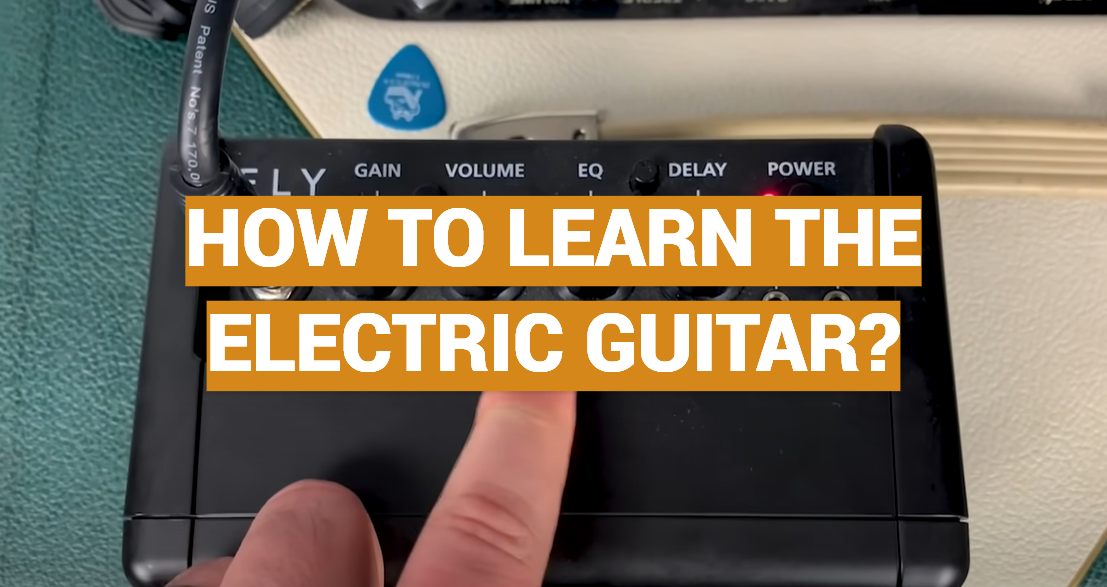




Leave a Reply